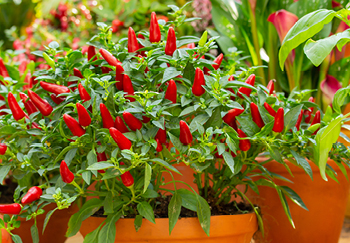Growing Chillies from Seed to Harvest
February 26th, 2021 | Categories
If you’re looking for an easy to follow and informative guide to tell you how to grow chillies at home from seed to harvest, then look no further. Growing chillies at home is easy and will produce a bountiful crop throughout the growing season, even from a few small pots. Whether you want to grow chillies as an ingredient for meals and sauces or something else, you’re in good company. In recent years the UK has embraced chillies more than ever. Beyond our love for hot curries, chillies are now an ingredient in jams, chutneys, salts, pickles, chocolates, beers and more. There’s even an annual chilli festival near Bristol that attracts tens of thousands of people over the course of the event.
Growing chillies at home from seed is easy for anyone to do, even total beginners. Whether you want a specific shape, flavour, heat or colour, there’s a chilli pepper seed for every criterion. Better still, you don’t need a garden to grow them either, meaning anyone can do it. Ready to find out how to start growing your own chillies in pots at home? Then let’s go!
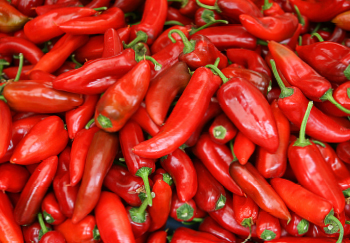
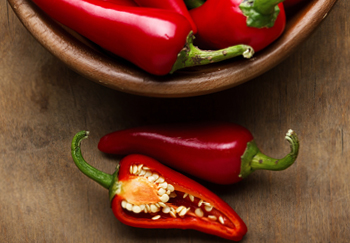
Why Grow Chillies at Home?
As mentioned, chillies are easy to grow at home from seed. They don’t have a big footprint, requiring little space. They also don’t need that much attention throughout their growing cycle. Chillies are one of the easiest things to grow at home, and they do very well in pots. This basically means you don’t need a garden, and a sunny balcony or patio or even window ledge (so long as properly secured) will work. Even experienced gardeners will still grow them in pots, it really is the best way. This is also partly because chillies require tropical temperatures, and in the UK, we can only reach these temperatures when growing indoors or in a greenhouse.
And why chillies themselves? Well, chillies are a versatile ingredient to add flavour, colour and heat to a variety of meals. They’re also good for you. Chillies contain a host of antioxidants, vitamins and minerals. There are even multiple studies that show chillies help to break down ‘bad’ cholesterol but leave the ‘good’ cholesterol that helps remove it. Further still, they appear to block the action of a gene that makes arteries contract, thereby helping blood flow.
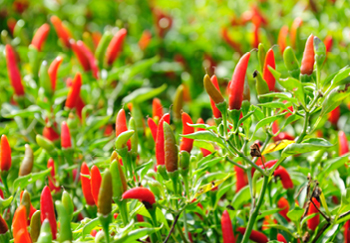
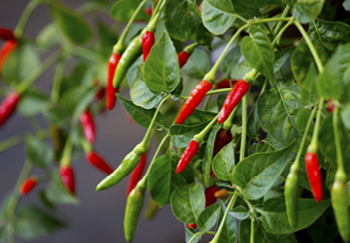
What Variety of Chillies Should You Grow?
Chances are you will grow fairly standard, medium heat chillies, but if you want to explore other specific options for colour, shapes, flavours or go for very hot chillies, you can. There are thousands of varieties to choose from. All chillies are bred from five species:
Capsicum anuum
These are the most common chilli species and examples include Cayenne, Jalapenos and Padron.
Capsicum baccatum
These have a distinctive, fruity flavour, and are commonly ground into colourful powders for use in cooking, each identified by its colour.
Capsicum chinense
A misnomer as all chillies originated in the Americas. It is a hot species of chilli. Think habanero and scotch bonnet chillies.
Capsicum frutescence
Similar to Capsicum annum. Sometimes considered to be the same species as C. Where tabasco Thai-style chillies come from like the African Birdseye variety.
Capsicum pubescens
These are less common medium to hot chillies with distinctive black seeds.
The heat of each chilli is measured by the Scoville Scale and the hottest, ‘Dragons Breath’ is so hot it could trigger an anaphylactic shock! It’s highly likely you will be growing a fairly standard variety from the Capsicum annum or chinense species, but you could grow any in pots at home. The choice is yours.
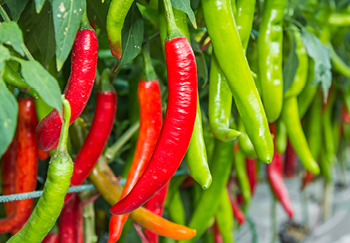
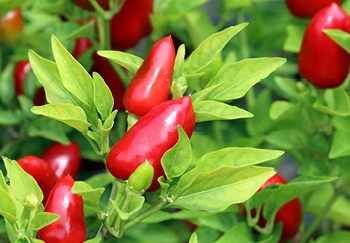
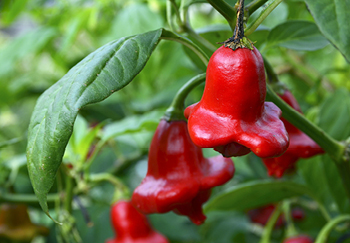
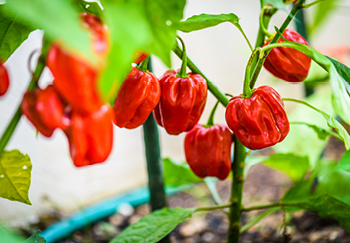
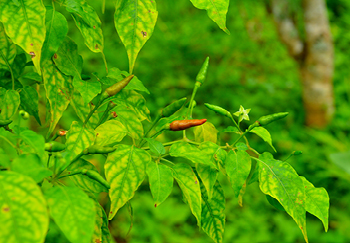

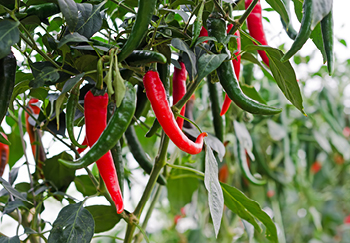
How to Start Growing Chillies from Seed
Now you know a bit more about chillies you’re ready to get started growing your own at home from seeds in pots. It pays to know what to do in advance so read through our guide, get up to speed, and then when you’re ready to go, get started! Remember, you’ll be starting off from seeds and you can buy these throughout the year. However, the best time to start sowing will be from January/February.
Chilli peppers need a warm, sunny position preferably indoors or a greenhouse. Very hot chilli varieties will do much better under cover, as this helps develop the intense heat, taste and flavour. Although they can be grown the ground, they really are one of the crops better suited to containers and pots.
Another thing to note is that while different varieties of chilli will have different levels of heat, if you want them to be as hot as they can be, allow them to go red. The hotter the variety the longer they will need to grow to harvest too.
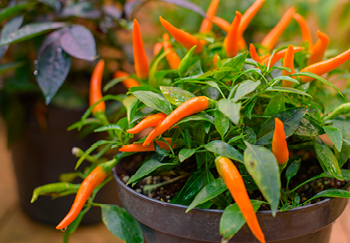
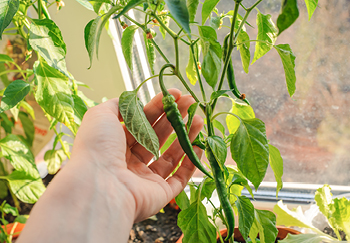
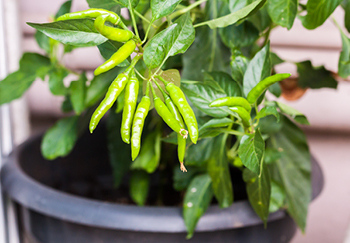
What You Will Need
When it comes to growing your own fruit or vegetables, preparation is the key to success. Before starting anything, gather some necessary items and materials:
Chilli Seeds
Purchase the chilli varieties you will grow and have them at the ready.
Starter and Larger Pots
You’ll need a small plastic seed tray or several pots to start the seeds off. Then when there are sprouting plants they’ll be transferred to their final pot. At this stage you can grow chillies from very small pots that sit on a windowsill or ledge, just ensure it is well draining when it comes to watering as they really need good drainage. In terms of the amount, unless you plan to eat them every day a couple of plants in pots should be a plentiful supply.
Compost
You’ll need a soil-based loam seed compost for germination and best results.

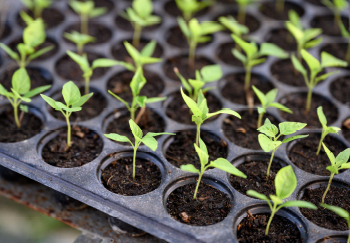

Sowing the Seeds Indoors
After you have everything you need here’s what you will do. First, it’s about preparing the chilli seeds to give them the best possible start as they need lots of warmth to germinate. You can sow from February to April. Sowing earlier is generally better.
Fill your seed tray or small plastic pots with the seed compost and flatten but don’t compress. Sow a few of your chosen variety of chilli seeds on top and cover with a fine layer of compost. Only use as many as you need as typically most chilli seeds will germinate successfully. Cover your seed tray or pots with clingfilm and pop them on a sunny windowsill or in a warm airing cupboard.
Germination usually takes a week to ten days. At this point you’ll see some small seedlings beginning to sprout from the soil. As soon as seedlings appear remove the clingfilm/cover. Leave them in their sunny/warm position until the seedlings are about 2-3 cm tall and two true leaves have formed. At this point, you’ll prepare to transfer to their main pot for cropping. If you don’t have time to sow seeds, then you can buy young chilli plants from garden centres in late spring.
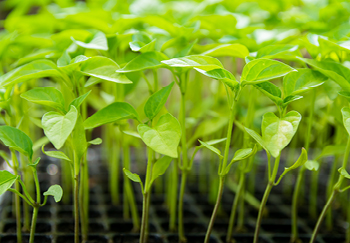
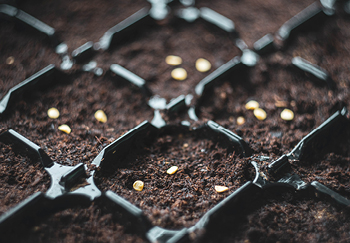
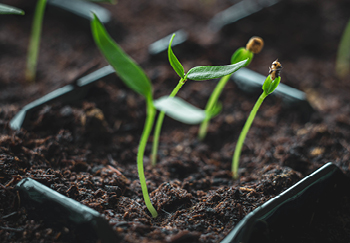
Transferring Young Plants to Larger Pots
Transferring your young chilli plants is a simple enough process. Simple repot each young plant to its own pot filled with a good quality compost and water.
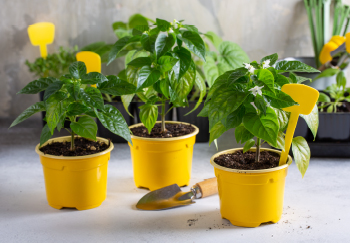
Chilli Pot Placement
When choosing the spot for your chilli pot it will need a warm, sunny position somewhere like a greenhouse or windowsill. While you can place the pots outdoors it is likely they won’t crop as well. We just don’t have the weather in the UK.
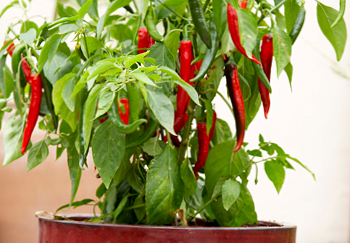
Growing & Ongoing Care
Water your plants regularly but sparingly throughout the growing season. Chillies do not like to be overwatered and it will affect the crop. Feed weekly with a high potash fertiliser once plants have started flowering. Depending on your variety of chilli, it may have a tall growing plant stem, in which case, staking to support the stem will be necessary but this is simple enough.
Also, remember to pinch out (remove) the growing tips of the first flowering shoots or when the plant is about 20cm tall. This is done to promote better branching to give you a better harvest. To pinch them out, simply pinch back (remove) the top of the plant leaving a good number of side shoots (branches). This encourages the plant to grow a lot of chillies rather than upward stem growth. If it’s getting a big too busy after this, pinch some of the side shoots out too.
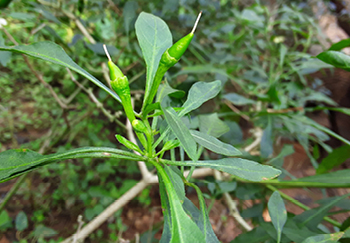
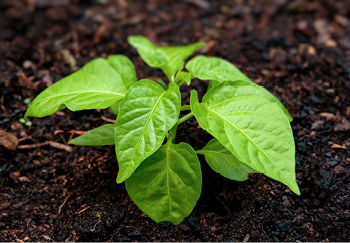
Harvesting Your Chillies
Chillies will generally be ready to pick off from mid into late summer. If you want less heat, pick them when they’re still green. Or if you like a bit of heat then leave them to mature to a nice deep red colour for more heat. Once you see chillies appear you can harvest as and when required. Regularly harvesting them will ensure the plant remains focused on production throughout the season.
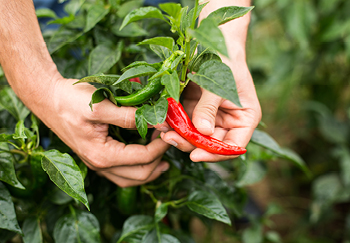
Storing Chillies
Chillies can be stored in a variety of ways. You can dry them then store in an airtight container somewhere cool and dark. Or make chilli flakes by chopping just before you store them. If you have a grinder, you can make chilli powder. Or pickle them. Additionally, you can freeze them freshly picked in a freezer bag.
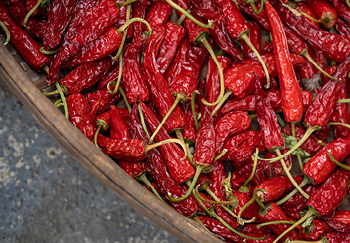
Common Problems to be Aware Of
Like any plant and crop, chillies can suffer from some problems, but with the right preparation, care and attention you will have minimal issues. Here’s a run through of what to know and watch out for though.
Blossom-end Rot & Grey Mould
Both of these potential issues are caused by erratic watering so make sure you are consistent with your watering.
Pests
Chilli plants are susceptible to the Aphids, Whitefly and Red spider mite that suck the sap and nutrients from the plant. Red spider mite can be avoided by regular misting, while a soapy spray will stop the aphids and whitefly.
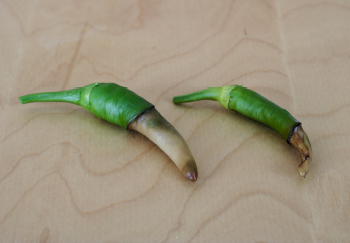
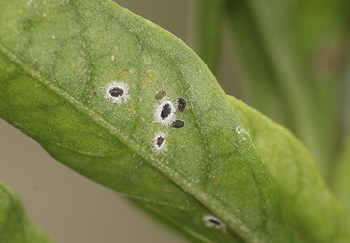
Home-Grown Chillies in Pots
It couldn’t be easier to grow your own chilli plants at home for a bountiful harvest all season long. Nothing beats the tang of a fresh chilli and you can take pride in knowing it was made by your own hand. These are one of the easiest crops to grow by yourself at home so why not give it a go and see if you enjoy it. You never know, this might be the first step to your very own vegetable garden!
